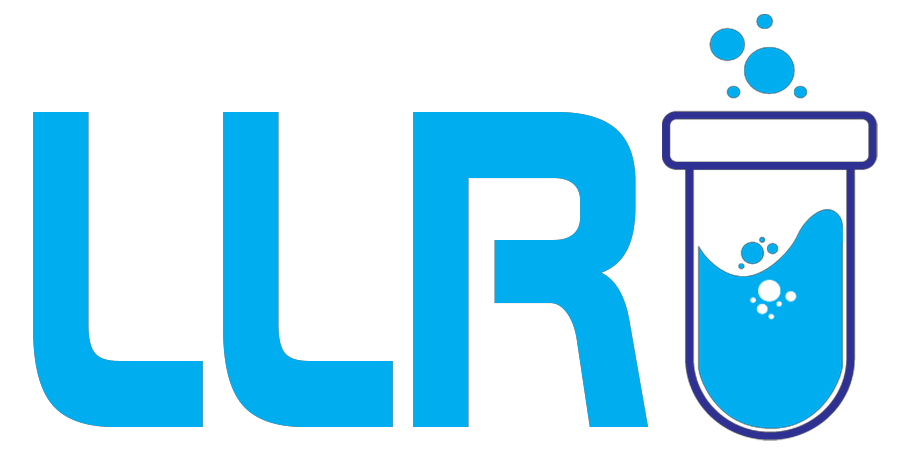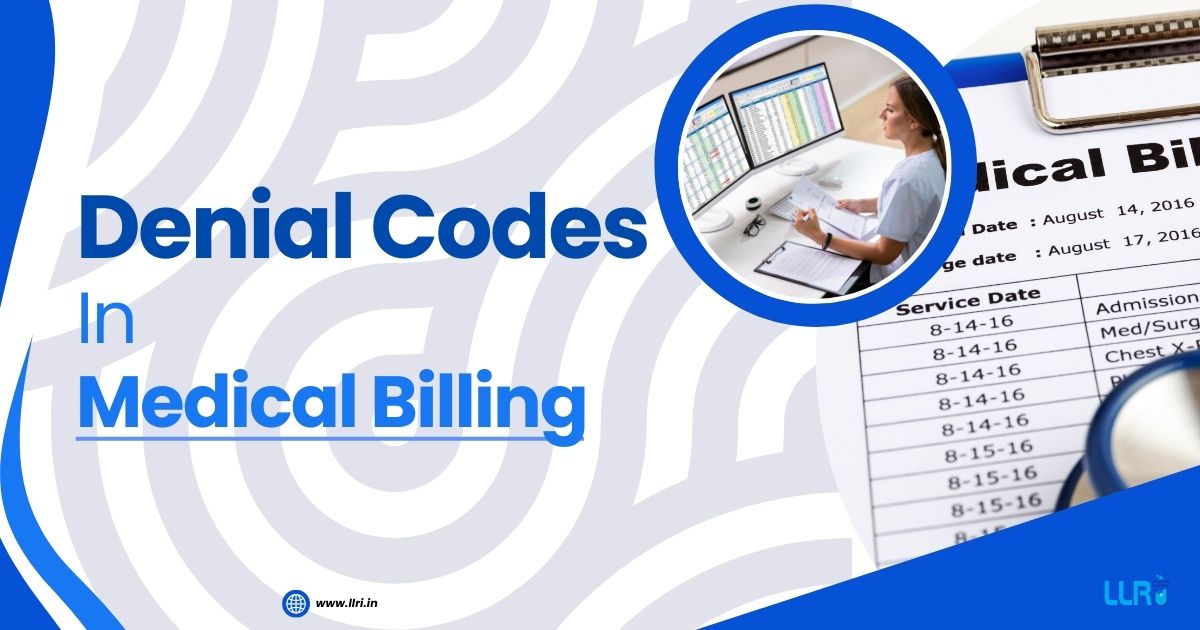Denial Codes in Medical Billing: If you’ve ever worked in medical billing or even just visited a hospital, you’ve likely come across insurance claim denials. And let’s face it—those cryptic messages with codes like CO-97 or PR-27 don’t explain much, do they? These are what we call denial codes in medical billing.
These codes help medical billing professionals understand why a particular claim was denied by the insurance company. But if these codes are not decoded properly, you could face delayed payments, administrative overhead, or worse—losses. So understanding them isn’t just helpful, it’s necessary.
This blog will walk you through the following:
- What denial codes mean
- A full list of denial codes in medical billing
- Reasons for denial
- How to avoid them
- How Clinical Research training and LLRI courses can help
Let’s get into the nitty-gritty.

What Are Denial Codes in Medical Billing?
Denial codes in medical billing are standardised alphanumeric codes used by insurance companies to specify why a medical claim was denied.
When a doctor or healthcare provider submits a claim to get paid for services, the insurer might deny the claim due to issues like documentation errors, missing details, or policy limitations. The denial code is the insurance company’s way of explaining why.
Why Are Denial Codes Important?
- They highlight specific issues in a claim so the provider can fix them.
- Without knowing the denial code, appeals become a guessing game.
- Understanding these codes helps providers avoid repeating mistakes in future claims.
“A denied claim costs not only time and money—it impacts patient trust and operational flow.”
– Healthcare Business Weekly, 2022
So, decoding them isn’t optional—it’s part of smooth revenue cycle management.
Common Denial Codes in Medical Billing and What They Mean
Let’s go deeper into the common denial codes in medical billing and understand what each one is trying to tell you. These are the codes you’ll run into most frequently:
- CO-50: Medical Necessity Denial Code
This code means that the insurance provider believes the procedure wasn’t necessary based on the diagnosis given.
When does this happen?
- A patient gets an MRI for back pain without trying physiotherapy first.
- Cosmetic procedures without clinical justification.
What to do:
- Include supporting clinical documentation.
- Cross-check that the diagnosis supports the treatment.
- Attach progress notes or doctor’s justification.
- CO-204: Medical Records Denial Code
This code indicates missing or insufficient documentation.
When does this happen?
- No discharge summary included.
- Lab reports or imaging results not submitted.
What to do:
- Send the requested medical records promptly.
- Recheck submission guidelines from the payer.
“Most denials under CO-204 are preventable with proper pre-submission audits.”
– Billing Compliance India, 2023

- PR-27: Pre Existing Condition Denial Code
This denial means the service provided relates to a pre-existing health issue that isn’t covered by the current policy.
When does this happen?
- A diabetic patient receives treatment before the policy waiting period ends.
- Cardiac treatment for someone with an unreported heart condition.
What to do:
- Check waiting periods or coverage terms.
- File an appeal if there’s proof the condition developed after policy activation.
- CO-97: Denial Code for Global Period
This is related to surgeries and post-operative care. The global period is a set time after a procedure when follow-up care is included in the procedure’s cost.
When does this happen?
- A post-op visit is billed as a separate claim during the global period.
- A minor procedure is performed during recovery from a major surgery.
What to do:
- Use modifiers like 24 or 25 to show the service was unrelated.
- Include documentation explaining the medical necessity of the separate procedure.
- CO-11: Diagnosis Not Consistent with Procedure
This means the diagnosis code provided doesn’t match the procedure code.
When does this happen?
- You bill for a knee replacement but submit a diagnosis for a skin rash.
What to do:
- Recheck ICD and CPT code compatibility.
- Coordinate with the doctor to clarify the diagnosis.
Medical Billing Denial Codes and Reasons
Here’s a table that covers medical billing denial codes and reasons for quick reference:
| Code | Reason for Denial |
| CO-50 | Procedure not medically necessary |
| CO-204 | Missing or incomplete records |
| PR-27 | Service linked to pre-existing condition |
| CO-97 | Included in global period – no separate payment |
| CO-11 | Diagnosis and procedure mismatch |
| CO-16 | Information is incomplete or invalid |
List of Denial Codes in Medical Billing
Here’s a quick list of denial codes in medical billing commonly used by insurance companies in India and globally:
- CO-50 – Lack of medical necessity
- CO-204 – Missing documentation
- CO-97 – Procedure part of global period
- PR-27 – Pre-existing condition exclusion
- CO-11 – Incorrect diagnosis coding
- CO-16 – Missing claim information
- CO-18 – Duplicate claim submitted
- CO-22 – This care may be covered under another insurance
Each code tells a story. The key is listening to it carefully and acting accordingly.
How to Avoid Claim Denials: Step-by-Step Solutions
Dealing with denials is frustrating. Here’s how to avoid them:
1. Pre-Authorisation & Eligibility Checks: Verify insurance details before the procedure to avoid surprises.
2. Accurate Documentation: Attach all necessary records like test reports, doctor’s notes, and discharge summaries.
3. Use Correct Codes: Double-check ICD-10 and CPT code compatibility. Tools like ClaimCheck can help.
4. Stay Updated: Keep track of the latest payer guidelines and coding updates.
Medical Necessity Denial Code – Avoiding CO-50
A major chunk of claim rejections is due to medical necessity denials.
Why?
Insurers look for evidence that the treatment was essential for the patient’s health condition.
How to Avoid?
- Include strong supporting documents.
- Cite clinical guidelines.
- Make sure the diagnosis justifies the treatment.
Medical Records Denial Code – Tackling CO-204
No records = No payment.
This is one of the easiest to avoid. Just make sure:
- All pages are scanned and readable.
- Every section is filled—especially doctor’s signature and test results.
- You keep a submission checklist.

Pre Existing Condition Denial Code – Dealing with PR-27
This denial is tricky because insurance companies often don’t cover diseases existing before policy activation.
Solution:
- Understand the waiting period of the policy.
- Collect proof from past reports if the condition developed later.
- Send a timeline of diagnosis and treatment.
Denial Code for Global Period – Handling CO-97
Best Practices:
- Use appropriate modifiers like 24 (unrelated evaluation) or 79 (unrelated procedure).
- Explain why the follow-up wasn’t related to the original procedure.
This is taught in depth at LLRI and in Clinical Research courses.
Why LLRI and Clinical Research Courses, Medical Coding Courses Help?
Learning Labb Research Institute (LLRI) is more than just a Clinical Research training centre—it’s a practical learning space for future billing experts, clinical researchers, and medical coders. The same goes for the medical coding courses.
LLRI offers the following, along with financial assistance and no-cost EMI!
- Clinical research course with billing focus
- Affordable clinical research course fees
- Live case studies and role-based training
- End-to-end exposure to claim cycle management
- Placement support in hospitals and MNCs
If you’re searching for the best institute for PG Diploma in Clinical Research, LLRI is a smart choice.
What Else You’ll Learn in Clinical Research Courses?
Besides claim processing, students gain exposure to:
- Good Clinical Practice (GCP)
- Pharmacovigilance basics
- Regulatory affairs
- Data management
- Medical coding techniques
So, even if your focus is billing, a Clinical Research course widens your job options.

On A Final Note…
Learning about denial codes in medical billing is not just a skill—it’s a career necessity. Whether you’re dealing with medical necessity denial code (CO-50), pre existing condition denial code (PR-27), or the denial code for global period (CO-97), knowing how to respond makes all the difference.
If you’re serious about learning, Learning Labb Research Institute and other Clinical Research training centres offer the tools and support to build your confidence in medical billing and claim management.
So next time a denial code lands on your desk, you’ll know exactly what to do.

